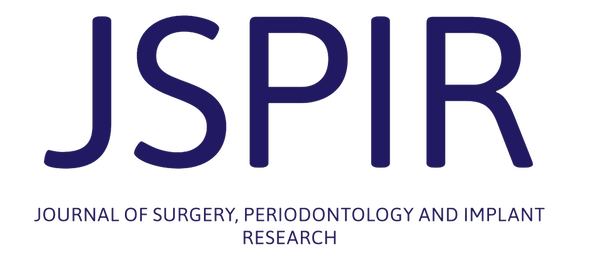Vol. 3, Issue 1, pages 15-23
Highly porous porcine xenograft utilized in bone augmentation procedures: case reports with clinical, histological and histomorphometrical evaluation.
Belleggia F, Filetici P, Tagariello G, Nicoletti F, Dassatti L
Abstract
Purpose: The aim of this report was to evaluate clinically, histologically and histomorphometrically a new highly porous porcine cancellous xenograft.
Case Report: A porcine xenograft (Zcore™) was used to treat 3 patients requiring the use of a bone graft: patient A required a horizontal GBR with a simultaneous sinus lift, patient B required a socket preservation after lower canine extraction, patient C required a mandibular horizontal GBR for the first molar implant rehabilitation. Healing was uneventful for all the interventions and, after bone graft maturation, re-entry was scheduled after 8, 3 and 7 months for patient A, B and C respectively. At implant insertion, two specimens were harvested from patient A, and 1 specimen was taken either from patient B and C. All implants healed uneventfully. Histological sections showed xenograft particles integrated in newly formed bone. Histomorphometric analysis for patient A revealed a 60.2% of bone marrow/connective tissue and 39.8% of mineralized fraction in the first specimen, while the second specimen revealed a 58.1% of bone marrow/connective tissue and 41.9% of mineralized fraction. For patient B the specimen revealed a 61.4% of bone marrow/connective tissue and a 38.6% of mineralized fraction. For patient C the specimen revealed a 52.1% of bone marrow/connective tissue and a 47.9% of mineralized fraction.
Conclusion: The use of a highly porous porcine xenograft allowed greater empty space for new bone growth, and a successful implant osseointegration. The values of histomorphometric analysis highlight a very good new bone formation for all the interventions.
Case Report: A porcine xenograft (Zcore™) was used to treat 3 patients requiring the use of a bone graft: patient A required a horizontal GBR with a simultaneous sinus lift, patient B required a socket preservation after lower canine extraction, patient C required a mandibular horizontal GBR for the first molar implant rehabilitation. Healing was uneventful for all the interventions and, after bone graft maturation, re-entry was scheduled after 8, 3 and 7 months for patient A, B and C respectively. At implant insertion, two specimens were harvested from patient A, and 1 specimen was taken either from patient B and C. All implants healed uneventfully. Histological sections showed xenograft particles integrated in newly formed bone. Histomorphometric analysis for patient A revealed a 60.2% of bone marrow/connective tissue and 39.8% of mineralized fraction in the first specimen, while the second specimen revealed a 58.1% of bone marrow/connective tissue and 41.9% of mineralized fraction. For patient B the specimen revealed a 61.4% of bone marrow/connective tissue and a 38.6% of mineralized fraction. For patient C the specimen revealed a 52.1% of bone marrow/connective tissue and a 47.9% of mineralized fraction.
Conclusion: The use of a highly porous porcine xenograft allowed greater empty space for new bone growth, and a successful implant osseointegration. The values of histomorphometric analysis highlight a very good new bone formation for all the interventions.
